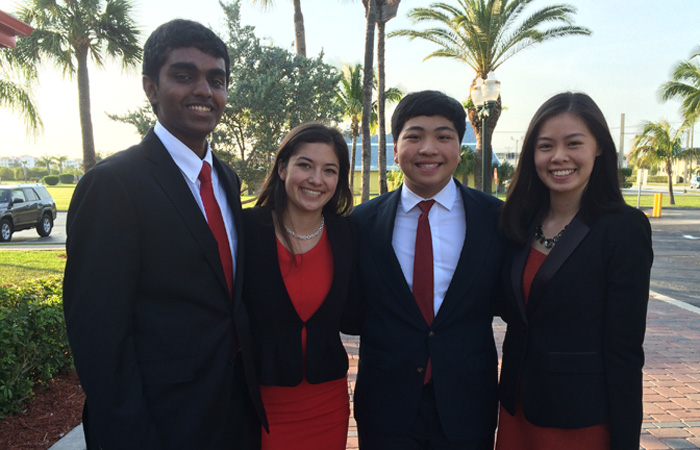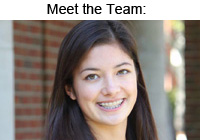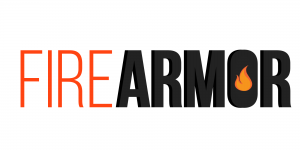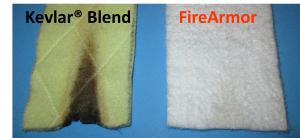
Team FireArmor is one of the five winners of the 2015 Conrad Spirit of Innovation Challenge, an honor bestowed upon a team of high school inventors and entrepreneurs. The competition challenges high school students to use science, technology, engineering, and math skills to develop commercially viable, technology-based products that address real-world challenges. As “Pete Conrad Scholars,” the winning teams in four categories (Aerospace & Aviation, Cyber-technology & Security, Energy & Environment and Health & Nutrition) are acknowledged as “top entrepreneur achievers” and encouraged and supported in the continued development of their innovative products. This year, a fifth category, “A Giant Leap to Mars,” was awarded as well.
“I was hiking in Arizona at the same time that the 19 Arizona firefighters were surrounded and killed in a flash fire.” – Savannah Cofer
Since 2013, the IPO Education Foundation has partnered with the Conrad Foundation to offer a finalist team a grant to offset the cost of obtaining a patent on its invention. This year, IPOEF chose Team FireArmor for its dramatic improvement to high temperature apparel for firefighters, inspired by the tragic death of 19 Arizona firefighters in 2011. “We believe that with the widespread application of our innovation, we would not only have safer firefighters but also a safer world,” says the team.
In this latest addition to IPOEF’s Young Innovator Insights interview series, read more about Team FireArmor’s inspiring technology, how they came to invent it and their thoughts on how companies can better explain to their peers the importance of IP protection in bringing such innovations to market.
  
|

Describe FireArmor—what does it do and how? How it is better than the current industry standard uniforms for firefighters?
FireArmor is an innovative protective apparel designed to protect firefighters or anyone who faces extreme temperatures. Unlike any protective apparel on the market today, FireArmor is composed of an inorganic, endothermic fiber that absorbs heat from its environment and keeps the firefighter safe even at dangerously high temperatures. Current firefighter turnout gear rapidly degrades above 300 degrees Celsius and provides less than six seconds of protection in flash fire conditions. In contrast, FireArmor keeps the firefighter safe even above 1000 degrees Celsius and provides up to five minutes of protection in a flashover condition.
Describe the process of inventing FireArmor; where did the idea come from and how did you begin?
We were inspired to create FireArmor two years ago when 19 Arizona firefighters were surrounded and killed during a flash fire. Ever since the breakthrough innovation of Kevlar and Nomex fibers over 40 years ago, the field of high temperature apparel has undergone relatively minor performance improvements. In 2011, over 1000 firefighters suffered severe injuries resulting from thermal burns, and last year, 87 firefighters died while on duty in the US alone. After the Arizona tragedy, we started thinking about whether an endothermic chemical reaction like that used in instant ice packs could be used to offer a dramatic improvement in firefighter apparel. We wondered if a chemical reaction that actually absorbs heat from its environment could be used to protect firefighters. After in-depth research of the performance requirements of high temperature apparel, we developed a solution based on a new class of materials comprised of alumina-silica hydrate fibers.

Yes, we are currently working on both a patent and a trademark. We have retained a patent attorney, and we are embarking on the initial stages of the patent search and filing.
Do you know anything about patents or did you know before working on FireArmor? Where did you first hear about patents and what has been your perception of them?
Savannah and Varun had already filed a patent for an invention that they proposed at the 2014 Conrad Innovation Summit. Based on discussions with experts throughout the industry, we quickly concluded that it was essential that we secured the intellectual property rights for that invention as well as the current FireArmor innovation.
Do you think most people your age understand what a patent is? What do your peers say about patents?
Most of our friends and classmates have a basic understanding of the role of patents. However, like most adults they have little familiarity with the rules surrounding disclosure of intellectual property, the process of filing and the strategy for developing the claims within a patent.
Sometimes patent, trademark and copyright owners–especially larger corporations–get criticized for enforcing their rights over alleged infringers of their intellectual property, and a lot of young people feel it’s ok to download content for free online or buy counterfeit products, for example. Why do you think that is, and what can companies do better to help young people understand the value of IP protection?
We think that one of the reasons why intellectual property may not be respected by people, especially young people, is because of the lack of education about the topic. Most of our peers understand the role of patents, but they don’t necessarily understand the importance of keeping intellectual property safe. We think companies can educate young people about the value of IP protection through a school curriculum and showing the damage that can be caused by IP infringement. If inventors don’t have a financial incentive to invent, they will be less likely to invest themselves in developing future innovations. Since our peers generally appreciate innovative products like the iPhone and Apple Watch, they could probably relate to such an example of how patent infringement could stifle the development of innovations like the iPhone.
Do you have plans to commercialize your invention? What does the future hold for each of you?
We are hopeful that our innovation could be applied to firefighter apparel, in addition to many other industries in which high temperature protection is needed. We believe that with the widespread application of our innovation, we would not only have safer firefighters but also a safer world. Each of us hopes to continue our work on FireArmor while pursuing careers in the fields of science, technology, engineering and mathematics. We hope that we can inspire others in the future to also pursue their own passions and build their ideas into full-fledged inventions!
Do any of you have ideas for other inventions in the works or plan to keep inventing?
At the moment, we intend to focus on FireArmor and keep working on developing our business plan. Concurrently, we are continuing research and development of FireArmor through further testing. For example, we plan to test FireArmor on a full scale human model and optimize the thermal protection for each element of firefighter turnout gear. Even outside of our FireArmor project, each one of us loves the process of invention and innovation. We are really enjoying working together as a team, so we all hope to continue working collaboratively on FireArmor and even on other new ventures.
[ssba-buttons]




